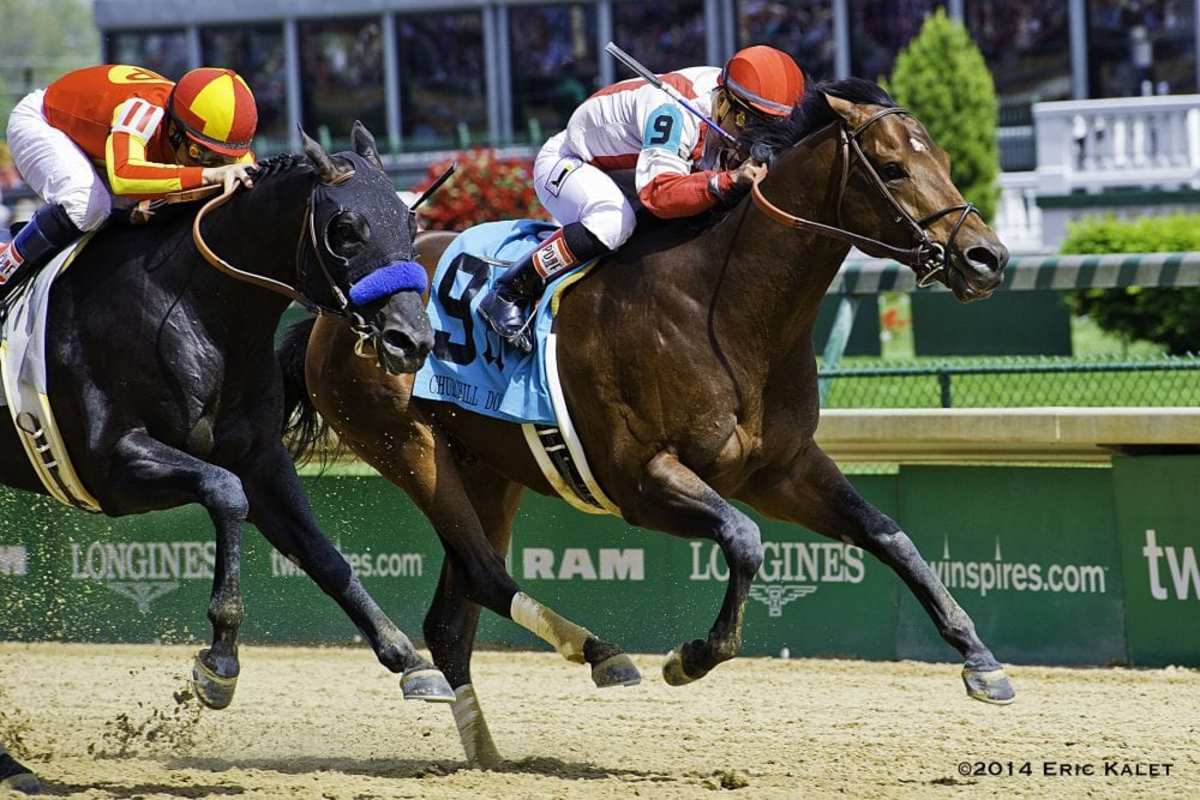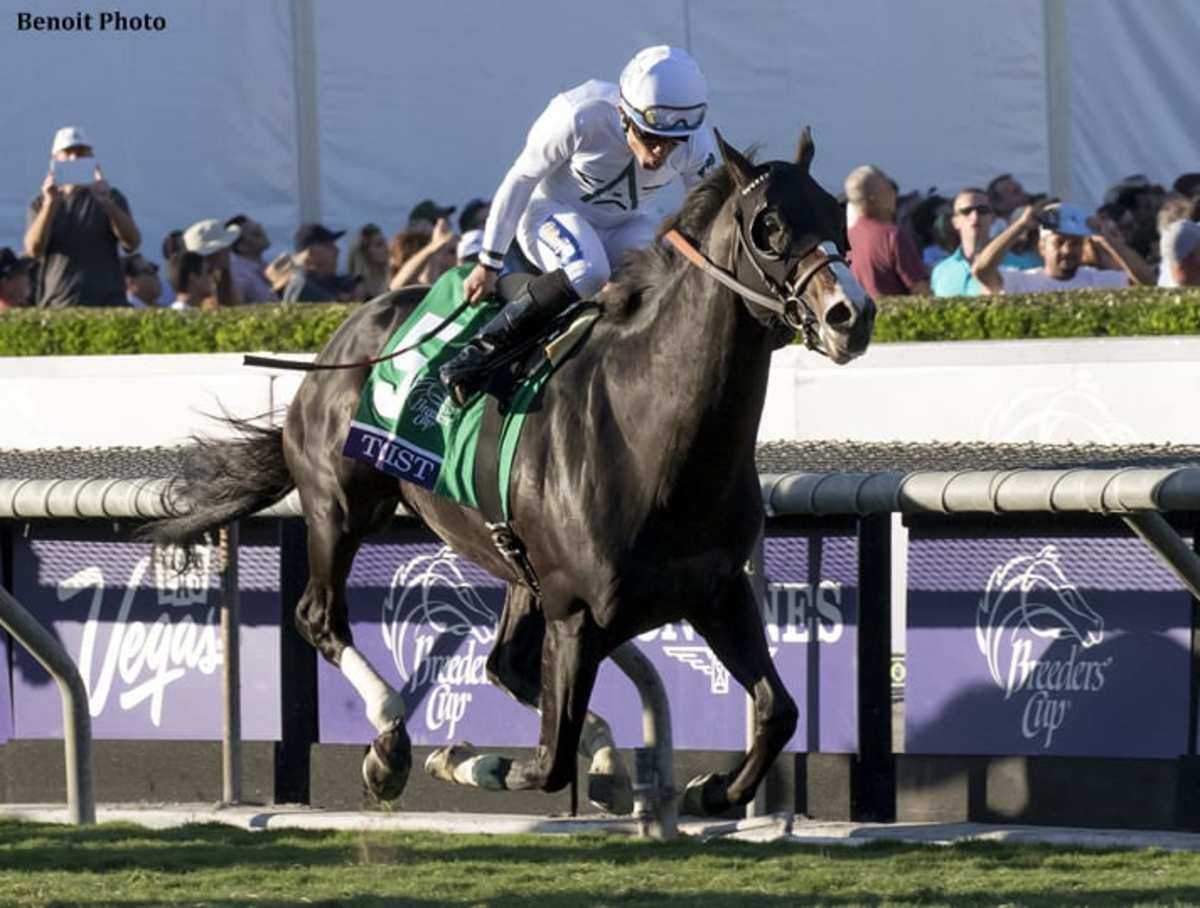Stallion Spotlight offers stud farm representatives a chance to address breeders and answer questions as they plan their future matings.
In this edition, John McMahon of McMahon of Saratoga Thoroughbreds discusses Central Banker, a Grade 2-winning son of Speightstown who has developed into one of New York's perennial leading sires.
Central Banker
B. h., 2010, Speightstown x Rhum, by Go for Gin
Race Record: 13-4-3-2; $598,786
Advertised Fee: $7,500

Question: What makes Central Banker an attractive stallion for potential breeders?
John McMahon: McMahon of Saratoga Thoroughbreds: He's a proven horse at an affordable price in a market that has extensive racing opportunities. The attributes he puts on his foals are speed, soundness, consistency, athleticism. All those things that have helped bolster his career are the things that make him an attractive stallion prospect.
He moves his mares up, and we feel like he does it in a safe manner, without a lot of exposure to his stud fee. Our main objective as a farm is for our breeders to make money, and we've never wavered with that in regards to his stud fee.
If I've got a mare lacking in a physical aspect, what can Central Banker best contribute to that equation?
McMahon: Balance and athleticism are his primary physical characteristics. His foals are so consistent. I've always told breeders he makes unattractive mares have attractive foals. He makes a mare that throws small foals have a medium-big foal, he makes a mare that throws too big and makes it a more athletic individual.
What would a breeder looking to capture the Speightstown line find familiar in Central Banker?
McMahon: Soundness. Bankit has displayed tremendous soundness throughout his long career. He's run against a lot of horses, and Central Banker gets a lot of horses to the racetrack that are all sound. That's what we also look for in an elite stallion like Speightstown.
Central Banker still has Bankit competing well in stakes competition going into age seven. What does it mean to Central Banker's resume to have one maintain high-level form this long?
McMahon: It helps a stallion's resume tremendously to have a horse like Bankit, who we've been watching seriously since he was a newborn. We always felt he was special. He was just born beautiful and kept outperforming expectations. I hate to just keep saying “soundness,” but it's just so important that a horse has a good mind and a sound body to go with it. Speed is a necessary ingredient, because the best trainers in the world can't make a horse perform if it's not inherently fast. Central Banker himself as a racehorse was quite handy, and his foals display plenty of speed.
What do you think has made Central Banker such a good fit for the New York program?
McMahon: Soundness, speed, durability, and dirt racing, and all those things that we see a lot of, he's been the horse for the course, because he's been able to keep up with the demands of the racing schedule.
What are some of the crosses that you have found work best with Central Banker, either through pedigree or physical?
McMahon: Pedigree-wise, we've seen a lot of variability. Northern Dancer, Seattle Slew, Indian Charlie, Halo are all stallion lines which come to mind immediately. Hoist the Flag, which is a speed stallion, and In Reality, through Relaunch to Colonel John. The majority of the broodmare band, I think, fits very nicely with him, because he doesn't seem to be falling upon just one main broodmare sire line to gain success.
Interestingly enough, no one really talks about inbreeding as much as they should, but the most recent stakes horse my parents have bred, Bank Sting, is a Mr. Prospector line, so we've in-bred to Mr. Prospector and had some success.
Where do you think the sweet spot is for a Central Banker runner, in terms of distance and surface?
McMahon: I'd say six furlongs to 1 1/16 miles is their sweet spot. Surface-wise, we love dirt racing, and that seems to be where they hit. We had a great Saratoga meet. From juveniles to horses breaking their maidens at three at Aqueduct, the purses are great and the distances lend themselves to be helpful.
For potential buyers at auction, what does one typically see from a Central Banker foal as a yearling, and as a 2-year-old in terms of their physical? What do the best commercial Central Bankers do to separate themselves from the rest?
McMahon: I think the best Central Bankers have balanced that athleticism with that size attached. There are always horses within your consignment that display a little bit more bone, more overall mass, and Central Banker has that really nice body type that he puts on that horse. I think that whole combination of consistency with that hip and shoulder, tied into a horse that looks mature, are usually the ones people pick out, and I think the market has rewarded those horses quite readily.
Support our journalism
If you appreciate our work, you can support us by subscribing to our Patreon stream. Learn more.What is something about Central Banker that you think goes overlooked?
McMahon: When he broke his maiden, it was in Saratoga, and the horse that ran second ended up being the Breeders' Cup Juvenile Sprint winner later that year (2012 winner Hightail). We didn't ever advertise that when he was first starting, and that's probably something nobody knows without going back and looking at the charts.
What else should readers know about Central Banker before picking up the phone?
McMahon: His Average Earnings Index is three times higher than his Comparable Index, so he moves your mare up. We just recently did a study on the Beyer Speed Figures of his winners, and 30 percent of Central Banker's winners display a Beyer of 90 or higher. Regardless of where you're racing, that Beyer number is something consistent to judge a horse's performance on.
The post Stallion Spotlight Presented By New York Thoroughbred Breeders Inc.: ‘Soundness, Consistency, Athleticism’ Has Taken Central Banker To The Top appeared first on Horse Racing News | Paulick Report.

